Living Buddha talks about Tibet
Updated: 2015-04-13 05:06
By MAY ZHOU in Houston(China Daily USA)
|
||||||||
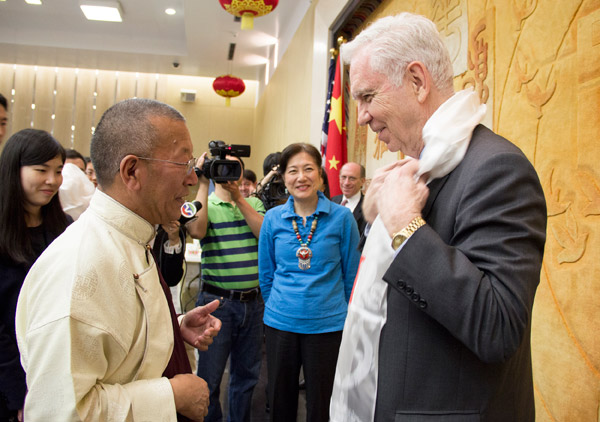 |
|
Living Buddha Shingtsa Tenzinchodrak (left) presents a Tibetan Kha Ta to US-China Partnerships Chairman Charles Foster (right) and while Foster's wife and actress Lily Chen Foster looks on. [Photo by MAY ZHOU / CHINA DAILY] |
A group of Houston business and community leaders got to learn about Tibet's current affairs from a special delegation on April 10 in Houston.
Hosted by Houston US-China Partnerships, the three-member delegation of Tibetan deputies from China's National People's Congress (NPC), the country's top legislature, was led by Shingtsa Tenzinchodrak, who also serves as vice-chairman of the Standing Committee of the People's Congress of the Tibet autonomous region.
Providing facts and figures — Tibet's GDP has risen from 130 million yuan in 1951 to 90 billion yuan in 2014; life expectancy has been increased to 68 today from only 35.5 in 1951 — Shingtsa Tenzinchodrak said that Tibetan life has improved much with the support and investment from the Chinese central government and other provinces.
Shingtsa Tenzinchodrak, who was recognized as the reincarnated living Buddha of the Xinza Temple in Langkazi County in 1955 when he was 5 years old, shared some of his personal experiences with the audience.
"I taught students when I was only 8 years old. I was much younger than some of my students who were 17 and 18, but I took my job quite seriously," he said.
The Living Buddha has many talents. "I have done and taught mural painting, sculpture, stonemasonry and blacksmithing," he said.
After being a teacher for 15 years, Shingtsa Tenzinchodrak worked on a farm in his hometown for 20 years.
"I enjoy physical labor," he said. "I think I learned more from laboring on the farm than from schooling. I shepherded sheep, I worked as stonemason and carpenter, and I built houses for my countrymen as well as for the government. As a Living Buddha, I also need to work just like any other people."
"Through my labor experiences, I learned three simple principles for being a good person: be sincere, be considerate of others and do the best that I can," said Shingtsa Tenzinchodrak.
"I enjoy learning, working and studying art. I am not really cut out for holding office, but people like me and pushed me into this position," he said.
A Q&A session was moderated by Charles Forster, chairman of both US-China Partnerships and Asia Society Texas Center.
In answering one question, Shingtsa Tenzinchodrak said that there were a lot of opportunities in Tibet for further cooperation and development in virtually all areas. In the field of energy alone, Tibet had great potential to develop solar, wind and hydraulic energy. "Lhasa is called the Sun City because we have plenty of sunshine," he said.
Shingtsa Tenzinchodrak said there were more than 400 sects of Tibetan Buddhism. "There used to be serious friction among different sects," he said. "After the peaceful liberation of Tibet in 1951, the central government implemented a policy of harmonious co-existence. Today there is little conflict between different sects."
Zhao Yumin, deputy consul general of China in Houston, said that this was the first time the Houston consulate had ever received a delegation from Tibet.
The delegation also held a separate similar discussion with a group overseas Chinese on Apr 10.
mayzhou@chinadailyusa.com
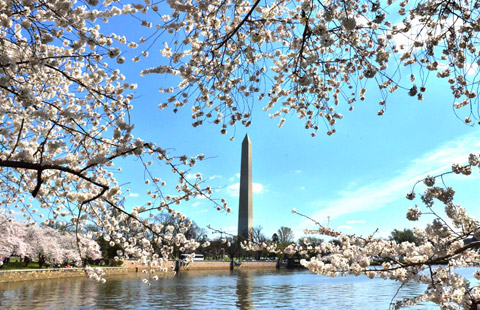
 National festival underway with cherry blossoms
National festival underway with cherry blossoms
 Ten photos you don't wanna miss - April 13
Ten photos you don't wanna miss - April 13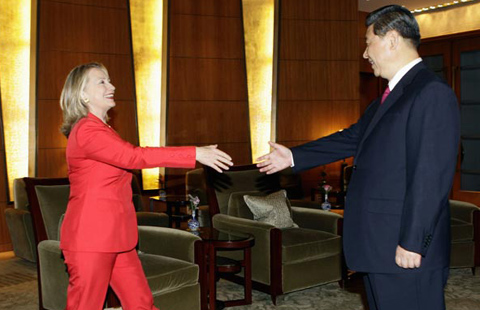
 Hillary Clinton's China connections
Hillary Clinton's China connections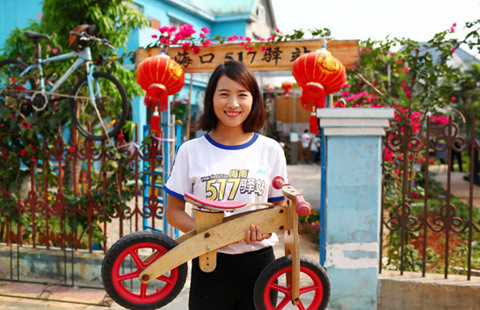
 Bicycle-friendly Hainan hotels cater to riders
Bicycle-friendly Hainan hotels cater to riders Stars dazzle at 2015 MTV Movie Awards
Stars dazzle at 2015 MTV Movie Awards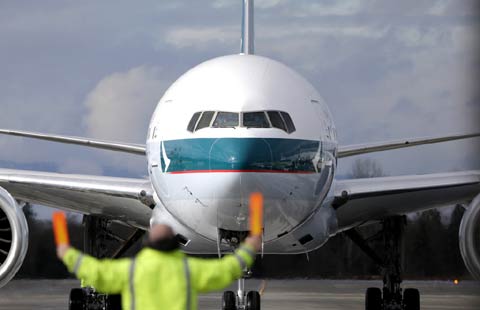
 Top 10 best airlines in the world
Top 10 best airlines in the world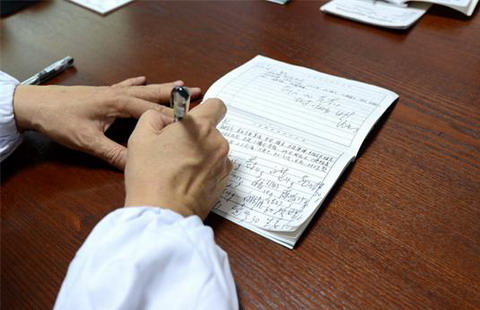
 Can doctors' illegible handwriting be justified?
Can doctors' illegible handwriting be justified?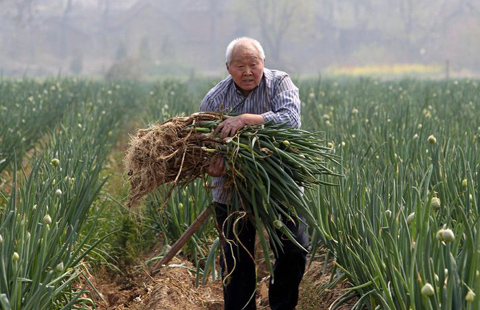
 Take home as many as you like
Take home as many as you like
Most Viewed
Editor's Picks

|

|

|

|

|

|
Today's Top News
US to help smart
cities quest
Hilary Clinton launches
presidential campaign
'No room' for election China-bashing: US politicians
AVIC buys Calif. aviation parts distributor
Protests across Brazil seek ouster of president
US backs China's campaign to hunt down fugitives
Obama, Castro hold historic meeting, vow to turn the page
Living Buddha talks Tibet
US Weekly

|

|






